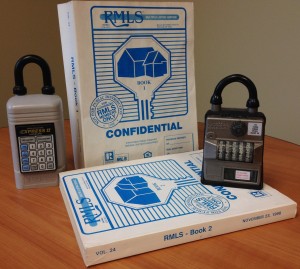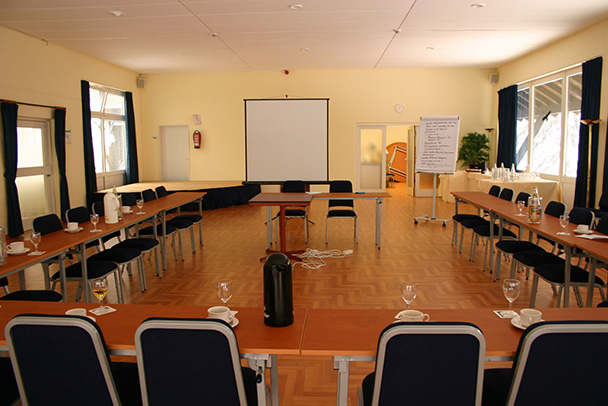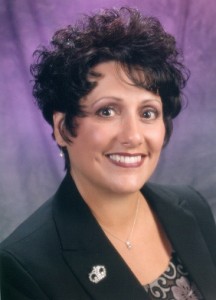![MLS Insight: A Brief History of RMLS]()
by RMLS Communication Department | Jun 25, 2014
 This post is part of MLS Insight, a series about governance issues at RMLS™.
This post is part of MLS Insight, a series about governance issues at RMLS™.
RMLS™ was created when representatives from four Boards of REALTORS® in the Portland metro area decided to form a service that was an alternative to a broker-owned multiple listing service in business since the 1970s. The Articles of Incorporation were filed on August 3, 1990, establishing RMLS™ as a 501C for-profit corporation.
Membership
The first RMLS™ listings went live in May 1991. Within a few short weeks, 3,433 area REALTORS® had subscribed to the fledgling MLS. This was 75% of the possible membership, and RMLS™ never looked back. Membership grew steadily to a high of almost 15,000 subscribers in 2007 and then fell in concert with the recession and REALTOR® membership to a low of just over 10,000 subscribers in January 2013. As the market has improved, subscriber numbers are rising again, and sit at about 11,000 midway through 2014.
Listings and Lockboxes
RMLS™ was computerized and offered a lockbox from the beginning. A staple of a 1990s MLS was “The Book” (above), a bi-weekly tome of active listings with a quarterly comparable book. As personal computing and connectivity became the norm, demand for the books waned, and they became optional in 1997. The last book printed was the 1999 4th Quarter Comparable Book.
The first lockbox was a mechanical system made by Multacc, which came with the following tip: Carry a can of silicone spray with you in case your key gets stuck in a dirty lockbox. This system was replaced in 1995 by a series of Supra electronic systems. After 18 years with Supra, RMLS™ switched to the SentriLock system in 2013.
Areas of Coverage
In the beginning, RMLS™ served only the five-county Portland metropolitan area in Oregon. The Douglas County Board of REALTORS® initiated discussions with RMLS™ early in 1998 to see if service could be extended to that area. Service to both Douglas and Coos Counties in Oregon was added later that year. The following year a merger with the Clark County, Washington MLS was finalized, bringing membership over the 7,000 mark. Service to Lane County followed in 2001. Curry County and the Mid-Columbia region in Oregon and Washington joined in 2005, with the Columbia Basin and Baker and Union Counties following suit in 2007 and Wallowa County in 2008.
Harnessing the Power of the Internet
RMLS™ utilized a vended dial-up system from Interealty called Stellar as the main MLS system until 2002. Development on RMLSweb began in 1998, and the first version of RMLSweb was rolled out early in 1999 as a parallel, search-only, internet-accessible system. Originally developed by a vendor, the code for RMLSweb was acquired in 2001 and development moved in-house. By the end of the following year, migration from the legacy system was complete and RMLSweb became the sole system, supported and extended entirely by in-house programmers and IT personnel.
RMLS™ first sent listings to the internet in 1996. The first internet policy to govern internet display of listings was crafted in 1998, establishing the RMLS™ philosophy that the broker should determine the destination of their own listings and setting the stage for today’s busy internet world of IDX, VOW, and syndication.
Communicating with Subscribers
RMLS™ had a goal of good communication with brokers and subscribers and outstanding customer service from the early days. The Training Department’s origins date to 1994, while the first Help Desk calls were taken by RMLS™ staff in 1996. (Prior to that time, the system vendor handled Tech Support.) A Technology/Trade Fair has been held annually since 1994. Today, our technicians can chat online and webinars have replaced many classroom offerings.
RMLS™ implemented the communication technology of the day as it became cost-effective. Broadcast faxes to brokerages started in 1993, an early predecessor to the current weekly email “RMLS™ Weekly Report.” In 1996, the REALTORS® Fax Service provided a way for subscribers to obtain RMLS™ information and documents 24 hours a day, seven days a week. Today, the Forms and Documents menu of RMLSweb is the mature version of that idea.
It’s difficult to encompass 23 years in a few words, but RMLS™ has changed greatly along with the real estate community and the world at large. MLS staff had one computer to conduct business in 1991, and were excited to have a 24-dot matix printer. Although a fledgling internet existed in 1991, most of us were unaware of it, and it took a largish room to house the computing power of a smartphone.
Next month we will talk about resources—how to find information you need to enhance your MLS experience online and from our staff. If you have any questions you would like to have answered about RMLS™ governance or operation, I encourage you to post a comment to this blog.
![MLS Insight: A Brief History of RMLS]()
by RMLS Communication Department | Jun 25, 2014
 This post is part of MLS Insight, a series about governance issues at RMLS.
This post is part of MLS Insight, a series about governance issues at RMLS.
RMLS was created when representatives from four Boards of REALTORS® in the Portland metro area decided to form a service that was an alternative to a broker-owned multiple listing service in business since the 1970s. The Articles of Incorporation were filed on August 3, 1990, establishing RMLS as a 501C for-profit corporation.
Membership
The first RMLS listings went live in May 1991. Within a few short weeks, 3,433 area REALTORS® had subscribed to the fledgling MLS. This was 75% of the possible membership, and RMLS never looked back. Membership grew steadily to a high of almost 15,000 subscribers in 2007 and then fell in concert with the recession and REALTOR® membership to a low of just over 10,000 subscribers in January 2013. As the market has improved, subscriber numbers are rising again, and sit at about 11,000 midway through 2014.
Listings and Lockboxes
RMLS was computerized and offered a lockbox from the beginning. A staple of a 1990s MLS was “The Book” (above), a bi-weekly tome of active listings with a quarterly comparable book. As personal computing and connectivity became the norm, demand for the books waned, and they became optional in 1997. The last book printed was the 1999 4th Quarter Comparable Book.
The first lockbox was a mechanical system made by Multacc, which came with the following tip: Carry a can of silicone spray with you in case your key gets stuck in a dirty lockbox. This system was replaced in 1995 by a series of Supra electronic systems. After 18 years with Supra, RMLS switched to the SentriLock system in 2013.
Areas of Coverage
In the beginning, RMLS served only the five-county Portland metropolitan area in Oregon. The Douglas County Board of REALTORS® initiated discussions with RMLS early in 1998 to see if service could be extended to that area. Service to both Douglas and Coos Counties in Oregon was added later that year. The following year a merger with the Clark County, Washington MLS was finalized, bringing membership over the 7,000 mark. Service to Lane County followed in 2001. Curry County and the Mid-Columbia region in Oregon and Washington joined in 2005, with the Columbia Basin and Baker and Union Counties following suit in 2007 and Wallowa County in 2008.
Harnessing the Power of the Internet
RMLS utilized a vended dial-up system from Interealty called Stellar as the main MLS system until 2002. Development on RMLSweb began in 1998, and the first version of RMLSweb was rolled out early in 1999 as a parallel, search-only, internet-accessible system. Originally developed by a vendor, the code for RMLSweb was acquired in 2001 and development moved in-house. By the end of the following year, migration from the legacy system was complete and RMLSweb became the sole system, supported and extended entirely by in-house programmers and IT personnel.
RMLS™ first sent listings to the internet in 1996. The first internet policy to govern internet display of listings was crafted in 1998, establishing the RMLS philosophy that the broker should determine the destination of their own listings and setting the stage for today’s busy internet world of IDX, VOW, and syndication.
Communicating with Subscribers
RMLS had a goal of good communication with brokers and subscribers and outstanding customer service from the early days. The Training Department’s origins date to 1994, while the first Help Desk calls were taken by RMLS staff in 1996. (Prior to that time, the system vendor handled Tech Support.) A Technology/Trade Fair has been held annually since 1994. Today, our technicians can chat online and webinars have replaced many classroom offerings.
RMLS implemented the communication technology of the day as it became cost-effective. Broadcast faxes to brokerages started in 1993, an early predecessor to the current weekly email “RMLS Weekly Report.” In 1996, the REALTORS® Fax Service provided a way for subscribers to obtain RMLS information and documents 24 hours a day, seven days a week. Today, the Forms and Documents menu of RMLSweb is the mature version of that idea.
It’s difficult to encompass 23 years in a few words, but RMLS has changed greatly along with the real estate community and the world at large. MLS staff had one computer to conduct business in 1991, and were excited to have a 24-dot matix printer. Although a fledgling internet existed in 1991, most of us were unaware of it, and it took a largish room to house the computing power of a smartphone.
Next month we will talk about resources—how to find information you need to enhance your MLS experience online and from our staff. If you have any questions you would like to have answered about RMLS governance or operation, I encourage you to post a comment to this blog.
![MLS Insight: A Brief History of RMLS]()
by RMLS Communication Department | May 29, 2014

This post is part of MLS Insight, a series about governance issues at RMLS™.
In previous MLS Insight posts, I covered the general governance of RMLS™ including our shareholders, Board of Directors, and standing committees. The Service Advisory Committee (SAC) is a topic that deserves a closer look.
When RMLS™ began serving areas outside the Portland metro area where our shareholder REALTOR® associations were located, we wanted to find a way to make sure that those subscribers’ voices could be heard. In 2000, our Articles of Incorporation and Bylaws were changed to establish the Service Advisory Committee. The Articles of Incorporation clearly define SAC’s purpose as “identifying the concerns of those who subscribe to the corporation’s service but who are not members of shareholders…”
Currently 16 REALTOR® associations appoint representatives to serve on SAC. The chairman of SAC automatically takes a seat on the RMLS™ Board of Directors, and SAC also appoints one additional director. SAC directors have full and identical rights and responsibilities as shareholder directors.
Our current Service Advisory Committee directors have both made many contributions to both RMLS™ and the broader real estate communities. Cory Neu served as the 2011 Chairman of the RMLS™ Board and a total of five years on the Executive Committee representing SAC from the Eugene Association of REALTORS®. Our current Treasurer, Lori Palermo, represents SAC from the Springfield Board of REALTORS® and has served on SAC since its inception in 2000. I asked them to provide their own insider views on the Service Advisory Committee for this post.

“I have had the pleasure of serving on the Service Advisory Committee since its inception. I especially appreciate the avenue that the committee provides for bringing questions, concerns, and issues of members across the state to the RMLS™ Board of Directors. Several suggestions and enhancements that have come from SAC have been implemented and are in use today.” –Lori Palermo
 “I’ve served in several capacities for my local and state associations, and having the opportunity to chair the RMLS™ Service Advisory Committee for the last 11 years has been the most rewarding in my real estate career. In that time, the SAC has brought many recommendations to the board and staff, from rules and regulations to RMLSweb functionality. Those things directly effect our profession on a very real and direct level.” –Cory Neu
“I’ve served in several capacities for my local and state associations, and having the opportunity to chair the RMLS™ Service Advisory Committee for the last 11 years has been the most rewarding in my real estate career. In that time, the SAC has brought many recommendations to the board and staff, from rules and regulations to RMLSweb functionality. Those things directly effect our profession on a very real and direct level.” –Cory Neu
Next month we will give a brief history of RMLS™. If you have any questions you would like to have answered about RMLS™ governance or operation, I encourage you to post a comment to this blog.
![MLS Insight: A Brief History of RMLS]()
by RMLS Communication Department | May 29, 2014

This post is part of MLS Insight, a series about governance issues at RMLS™.
In previous MLS Insight posts, I covered the general governance of RMLS™ including our shareholders, Board of Directors, and standing committees. The Service Advisory Committee (SAC) is a topic that deserves a closer look.
When RMLS™ began serving areas outside the Portland metro area where our shareholder REALTOR® associations were located, we wanted to find a way to make sure that those subscribers’ voices could be heard. In 2000, our Articles of Incorporation and Bylaws were changed to establish the Service Advisory Committee. The Articles of Incorporation clearly define SAC’s purpose as “identifying the concerns of those who subscribe to the corporation’s service but who are not members of shareholders…”
Currently 16 REALTOR® associations appoint representatives to serve on SAC. The chairman of SAC automatically takes a seat on the RMLS™ Board of Directors, and SAC also appoints one additional director. SAC directors have full and identical rights and responsibilities as shareholder directors.
Our current Service Advisory Committee directors have both made many contributions to both RMLS™ and the broader real estate communities. Cory Neu served as the 2011 Chairman of the RMLS™ Board and a total of five years on the Executive Committee representing SAC from the Eugene Association of REALTORS®. Our current Treasurer, Lori Palermo, represents SAC from the Springfield Board of REALTORS® and has served on SAC since its inception in 2000. I asked them to provide their own insider views on the Service Advisory Committee for this post.

“I have had the pleasure of serving on the Service Advisory Committee since its inception. I especially appreciate the avenue that the committee provides for bringing questions, concerns, and issues of members across the state to the RMLS™ Board of Directors. Several suggestions and enhancements that have come from SAC have been implemented and are in use today.” –Lori Palermo
 “I’ve served in several capacities for my local and state associations, and having the opportunity to chair the RMLS™ Service Advisory Committee for the last 11 years has been the most rewarding in my real estate career. In that time, the SAC has brought many recommendations to the board and staff, from rules and regulations to RMLSweb functionality. Those things directly effect our profession on a very real and direct level.” –Cory Neu
“I’ve served in several capacities for my local and state associations, and having the opportunity to chair the RMLS™ Service Advisory Committee for the last 11 years has been the most rewarding in my real estate career. In that time, the SAC has brought many recommendations to the board and staff, from rules and regulations to RMLSweb functionality. Those things directly effect our profession on a very real and direct level.” –Cory Neu
Next month we will give a brief history of RMLS™. If you have any questions you would like to have answered about RMLS™ governance or operation, I encourage you to post a comment to this blog.
![MLS Insight: A Brief History of RMLS]()
by RMLS Communication Department | May 29, 2014

This post is part of MLS Insight, a series about governance issues at RMLS™.
In previous MLS Insight posts, I covered the general governance of RMLS™ including our shareholders, Board of Directors, and standing committees. The Service Advisory Committee (SAC) is a topic that deserves a closer look.
When RMLS™ began serving areas outside the Portland metro area where our shareholder REALTOR® associations were located, we wanted to find a way to make sure that those subscribers’ voices could be heard. In 2000, our Articles of Incorporation and Bylaws were changed to establish the Service Advisory Committee. The Articles of Incorporation clearly define SAC’s purpose as “identifying the concerns of those who subscribe to the corporation’s service but who are not members of shareholders…”
Currently 16 REALTOR® associations appoint representatives to serve on SAC. The chairman of SAC automatically takes a seat on the RMLS™ Board of Directors, and SAC also appoints one additional director. SAC directors have full and identical rights and responsibilities as shareholder directors.
Our current Service Advisory Committee directors have both made many contributions to both RMLS™ and the broader real estate communities. Cory Neu served as the 2011 Chairman of the RMLS™ Board and a total of five years on the Executive Committee representing SAC from the Eugene Association of REALTORS®. Our current Treasurer, Lori Palermo, represents SAC from the Springfield Board of REALTORS® and has served on SAC since its inception in 2000. I asked them to provide their own insider views on the Service Advisory Committee for this post.

“I have had the pleasure of serving on the Service Advisory Committee since its inception. I especially appreciate the avenue that the committee provides for bringing questions, concerns, and issues of members across the state to the RMLS™ Board of Directors. Several suggestions and enhancements that have come from SAC have been implemented and are in use today.” –Lori Palermo
 “I’ve served in several capacities for my local and state associations, and having the opportunity to chair the RMLS™ Service Advisory Committee for the last 11 years has been the most rewarding in my real estate career. In that time, the SAC has brought many recommendations to the board and staff, from rules and regulations to RMLSweb functionality. Those things directly effect our profession on a very real and direct level.” –Cory Neu
“I’ve served in several capacities for my local and state associations, and having the opportunity to chair the RMLS™ Service Advisory Committee for the last 11 years has been the most rewarding in my real estate career. In that time, the SAC has brought many recommendations to the board and staff, from rules and regulations to RMLSweb functionality. Those things directly effect our profession on a very real and direct level.” –Cory Neu
Next month we will give a brief history of RMLS™. If you have any questions you would like to have answered about RMLS™ governance or operation, I encourage you to post a comment to this blog.
by RMLS Communication Department | Apr 25, 2014
Update (May 28, 2014): RMLS™ recently prepared a FAQ document about the office exclusive changes.
As announced earlier this spring, RMLS™ is bringing changes to our office exclusive form and policies. These changes now have final approval by the RMLS™ Board of Directors and will take effect May 5, 2014.
After carefully considering additional input from subscribers, RMLS™ changed the original revisions in the following ways:
• Removed the requirement to submit a copy of the listing contract when submitting a signed office exclusive form.
• The RMLS™ Rules and Regulations have been revised to reflect that new construction is handled differently.
Retained is the language that prohibits beginning any marketing before “date marketing to begin.” This topic generated much of the discussion among subscribers, but RMLS™ President Kurt von Wasmuth recently explained some important details in how the rule will be administered:
The basic point of the changes to this (Section 3.2) is to prohibit marketing of a listed property unless the listing broker either submits the listing to RMLS™ or submits an office exclusive form for that listing within the time limits specified. The rule describes marketing activity as including—among other things—placing a sign on the property, social media or internet exposure, or direct marketing of the property to brokers or consumers. This rule does not prevent a listing broker from engaging in general, non-specific discussions about a property that will soon come on the market. Examples of these general discussions would be a broker’s announcement about property in a neighborhood “coming soon” during a company sales meeting, with X bedrooms, Y baths, and a certain kind of yard in a certain price range.
Falling under the rule would be specific marketing efforts regarding a particular property, such as identifying an address, a listing price, and the like. These constitute direct marketing, and in that case the listing either needs to be entered into RMLS™ within 72 hours of signing or the signed office exclusive form needs to be sent to RMLS™. This approach was designed to allow reasonable “pre-marketing” activities that the brokerage community generally regards as common, fair, and helpful to sellers, while preserving the basic premise of any MLS that all participants share their listings on a timely basis, unless a seller has made an informed choice to withhold a property from the MLS.
View a redlined version of the RMLS™ rules impacted by these finalized changes.
View the new Office Exclusive/Authorization to Exclude Addendum.
View redlined versions of the Oregon and Washington listing contracts.
 This post is part of MLS Insight, a series about governance issues at RMLS™.
This post is part of MLS Insight, a series about governance issues at RMLS™.

